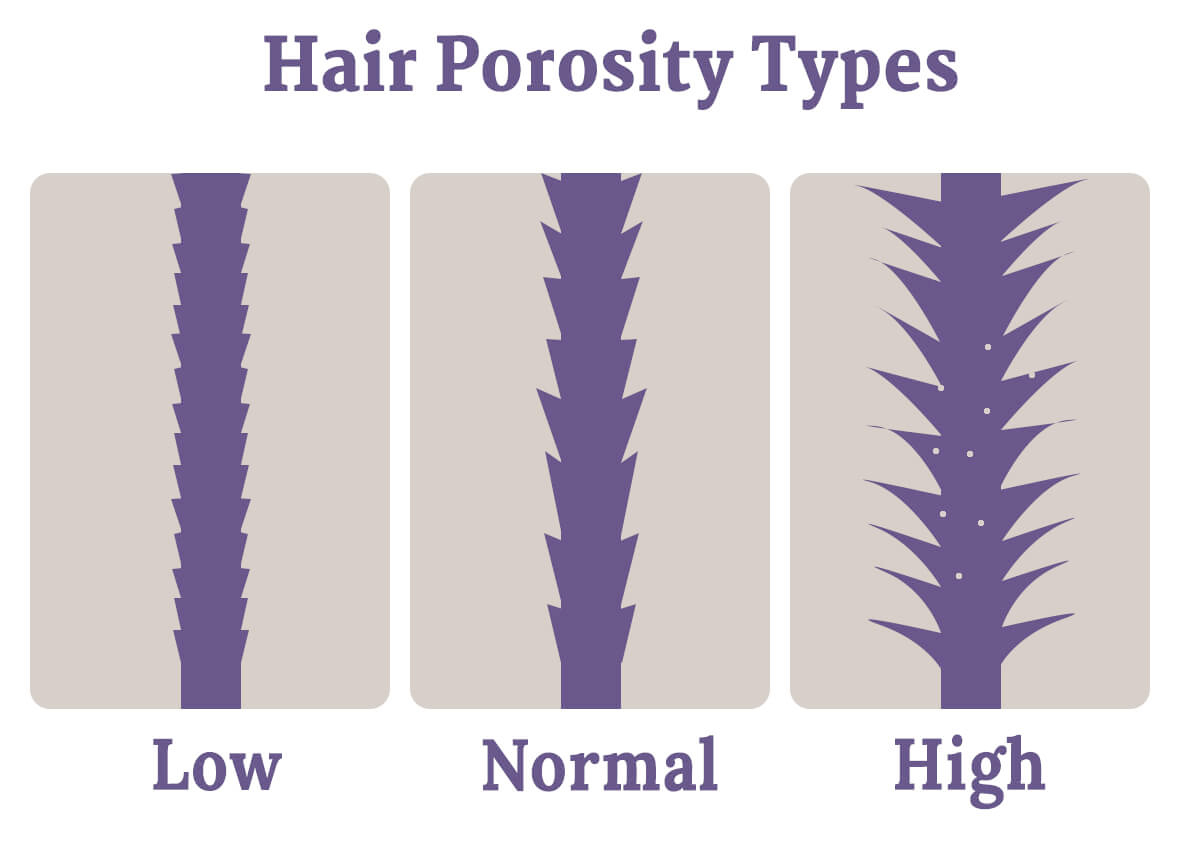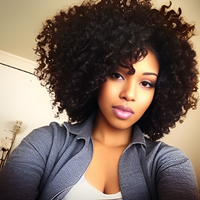Best Clarifying Shampoo for Low Porosity Hair
Updated on
This post may contain affiliate links. As an Amazon Associate, we may earn from qualifying purchases.

Here is the best clarifying shampoo for low porosity hair that will reset your curls and make them swallow every ounce of moisture.
I am African American, and my hair is low porosity central.
- It takes too long to soak up water or any hair products
- It’s always crunchy and crusty
- And it feels greasy and dirty all the time from buildup
As a result, my natural hair never really settles into the springy, bouncy layers I crave for.
If you have a similar hair problem, you’ll probably know:
The struggle to find products that work on low porosity hair is SO REAL because no matter how much moisturizers and oils you use, your curls will always look dry and stiff.
Not to mention the buildup from conditioning products, and desperate hair masks that also become tough to scrub out with regular shampoos.
But today, I will help you put a full stop to all your chronic low po hair problems because I’ve finally discovered that one product that simply works.
Trust me, this beauty on a budget shampoo will sweep away every scrap of grime from your low porosity curls and lock in the hydration that your hair craves for.
[me author=”kayla” label=”Say hello to the new Shea Moisture LP.”] An excellent shampoo and conditioner set designed for girls like us to save our bad hair days from the low porosity curse![/me]
Shea Moisture Manuka Honey & Mafura Oil Shampoo
Table of Contents
Why Your Low porosity Hair Needs a Clarifying Shampoo
Low porosity hair is usually universal to African Americans and is owed to genetic inheritance.
Based on a study on Afro-textured hair, black hair is different in composition because it varies through its distribution of lipids throughout the hair shaft.
Afro-textured hair is not as densely concentrated on the scalp as other follicle types like Asian and Caucasian hair.
Less porous hair tend to overlap each other and are tightly crammed together.

Due to the absence of space between the cuticles, water, oils, and conditioners have a hard time to penetrate and deliver moisture to the hair shaft.
This is why Afro-textured hair fails to spread the oil evenly along with the hair fiber due to the tight curls, twists and bends.
Without hydration and natural oils, the fibers become dry, resulting in brittle, and coarse texture.
It’s common for folks with low porosity hair to feel that hair products are just accumulating and causing buildup instead of soaking into the hair.
I’ve been experiencing this problem for years.
After reading about the signs of low porosity hair, and why it behaves in such a way, I figured out that I needed hair products that would work on flexing these tightly-packed cuticles for 2 key reasons:
- To properly open the cuticles and cleanse between them
- To allow moisture to pass through them
A moisturizing clarifying shampoo does precisely that.
Working at a slightly higher pH, it safely raises the hair cuticles to break down stubborn product buildup while giving your roots a gentle touch of follicular refreshment.
But there’s one important thing to remember when using a clarifying shampoo for natural hair:
It needs to be sulfate-free and more on the moisturizing side as compared to others, which can dry natural hair due to its intense cleansing effect.
That’s why I chose the Shea Moisture Low Porosity hair clarifying shampoo.
Designed especially for curls from people who understand curly hair types, Shea Moisture ticks all the right boxes when it comes to cleansing and hydrating natural hair.
- It purifies both your hair and scalp
- It provides plenty of slip
- It makes your hair super easy to detangle
- The conditioner restores pH balance of the hair and scalp
- The hydrating effect lasts all day long
Low porosity hair people, this product is seriously a god sent.
Shea Moisture Low Porosity Clarifying Shampoo
Just follow my instructions, and you’ll notice the difference straight away.
How Do You Clarify Low Porosity Hair?
I am not here to show you how to use a shampoo, but after experimenting for a bit, I want to share my trick which will make you enjoy it even more, and also see double benefits.
So without further ado, here’s how to use the Shea Moisture low porosity shampoo:
- Soak your hair for a few seconds
- Use a generous dollop and massage into your hair
- Distribute the shampoo evenly throughout
- Make sure you cover your roots
- Rinse after 3 minutes or so
- Blow-dry your hair half way
- Apply the hair conditioner
- Sit below a hair steamer for 20 minutes
- Rinse thoroughly
- Towel dry with a microfiber towel
- Brush and detangle with a Boar Bristle Brush
Also read: How often to wash low porosity hair?
Every time I use the LP shampoo, my curls feel like magically renewed. Full of bounce and spring again.
And the best part?
It retains moisture for longer. Not even a drop of humidity will give me a frizz panic.
So what makes this Shea Moisture shampoo work so well on low porosity hair?
The magic lies in the ingredients and the gentle cuticle flexing formula for curls.
Formulated with with manuka honey and mafura oil, the Shea Moisture shampoo works for all African American hair types, (i.e type 4 hair)
What’s even better is that the whole set is Sulfate-free. Which means it does not strip your hair and scalp from their natural oils.
I’ve tried many home DIY remedies before to tame my low porosity hair, and while some of them worked well, It wasn’t something I could cope with every week.
Here are a few examples of what I tried:
DIY Clarifying Remedies For Low Porosity Hair
Apple Cider Vinegar
Is Apple cider vinegar good for low porosity hair?
Yes: Because ACV has a higher pH compared to curly hair.
And the reason it works is that ACV raises the pH of your hair, therefore, flexing the cuticles to clean in between them.
I used to do Apple Cider Vinegar hair rinses to get rid of hard water buildup.
But the only problem is that it made me smell like pickled onion for the whole week.
That’s why I decided to give up. The Shea Moisture clarifying shampoo does enough for me to neutralize the effects of hard water on my hair and scalp.
Mustard Oil
Heated Mustard oil can be used as a pre-poo or low poo treatment, which helps to soften the hair and scalp before washing.
According to Healthline, using hot mustard oil as a hair mask can cure many hair and scalp problems like flakiness, hair breakage, and split ends.
The reason it works well for low porosity hair is that it softens the cuticles, therefore, allowing water and conditioners to pass through.
I’ve done it a few times, and I loved the shiny feeling of my hair.
[me author=”kayla” label=”Will I still do the treatment?”] Yes, possibly twice a month if I have the time.[/me]
Now, if you Google remedies for cleansing low porosity hair, you will find an endless list of miraculous oils and natural alternatives that can help you. It’s all good.
But one thing you should also consider is what to avoid putting in your hair.
Remember: Low porosity hair hates heavy oils and proteins, so let me give you a quick list of products to avoid to maintain a healthy hair care routine.
Products To Avoid On Low Porosity Hair
- Coconut Oil
-
Coconut oil or any heavy oil is essentially a big no-no.
Because these oils have bigger molecules, which makes them even harder to absorb when your hair cuticles are flat. Therefore, these oils contribute to even more buildup, which could take days to wash out.
- Heavy Protein Treatments
-
Low porosity hair is sensitive to protein treatments. Therefore, adding protein to your hair makes it even harder to process, and they dry out to cause even more buildup.
That’s why the Shea Moisture shampoo emphasizes its protein free formula.
- Hair Products With Silicone
-
Silicones are plastic-like materials that stick to your hair over time.
If your hair is already struggling to absorb moisture, using silicone-based products will only aggravate the situation. Think of it like an extra coating on your hair shafts, that requires more than a few washes to go away.
- Heavy Leave-In Conditioners
-
Most heavy leave in conditioners contain protein and silicones to give your hair that shiny and glossy feel.
Avoid them at all costs. Use alternative treatments like hair masks with steam.
Low Porosity Hair Products That Work
EZBASICS Hair And Face Steamer
This is my worst-kept secret because I cannot stop banging on about it!
Let me explain why it’s so effective …
Steaming hair treatments help low porosity hair to open up with gentle steam. This allows moisture to penetrate and stay inside the hair strands for longer.
Denman Boar Bristle Brush
Brushing your hair helps to loosen buildup before washing. It also stimulates your scalp to regulate sebum, which provides optimal moisture for your hair.
The boar bristle brush is also one of my favorite hair care products I can not live without.
Cotton towels are generally bad for natural hair because they create knots from their rough surfaces. A microfiber towel works better as it absorbs more moisture without the need to rub your hair vigorously.
Aquis Microfiber Towel
Just wrap it around your head after washing your hair, and when you take it out, you won’t even need to detangle!
Conclusion
Look no further, Shea Moisture is the best clarifying shampoo and conditioner set for low porosity natural hair.
It deep cleanses, moisturizes, and restores pH in one go.
Use it with a hair steamer for best results, and do the treatment at least once a week.
You’ll notice how much of a difference it makes.
You can finally enjoy the awesomeness that comes with a crown full of curls and coils that won’t go limp and dry throughout the day.
About the Author
 Kayla Davis
Kayla DavisKayla Davis is a self-proclaimed skincare and haircare junkie who loves testing out new products and writing about her experiences. Her bathroom shelves are always overflowing with beauty products. You name it - it's there.



